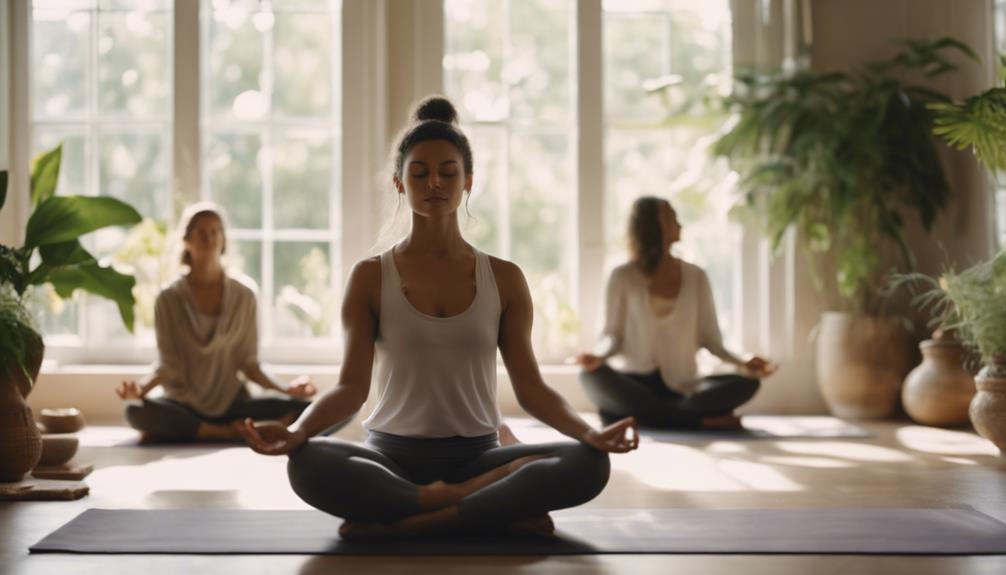Ashtanga Yoga is more than just a workout; it’s a holistic practice that integrates body, mind, and spirit. If you’re curious about the world of Ashtanga Yoga, you’ve come to the right place! This article will help you navigate the fundamentals, benefits, and techniques of Ashtanga Yoga, and even guide you on how to create a handy PDF guide for your practice. So roll out your mat, breathe deeply, and let’s dive in!
What is Ashtanga Yoga? A Quick Overview for Beginners
Ashtanga Yoga is a dynamic and structured form of yoga that emphasizes a set sequence of postures, known as "asanas," linked with breath control and movement. Originating from the teachings of K. Pattabhi Jois in the 20th century, Ashtanga follows a specific series of poses grouped into six sequences, each progressively increasing in difficulty. This methodical approach allows practitioners to develop strength, flexibility, and mental focus over time, making it a perfect choice for those looking to deepen their yoga practice.Tantric Naked Yoga
For beginners, Ashtanga Yoga may seem intense, but it’s essential to remember that everyone starts somewhere! The beauty of Ashtanga lies in its adaptability; even if you can’t yet master every pose in the series, the consistent practice will lead to gradual improvements. With regular practice, individuals often find a sense of community and support, which can be incredibly motivating.
The Benefits of Practicing Ashtanga Yoga Regularly
Practicing Ashtanga Yoga regularly comes with a myriad of benefits that extend beyond physical fitness. One of the most significant advantages is improved strength and flexibility, as the continuous flow of postures engages multiple muscle groups and encourages the body to open up. Over time, practitioners often notice increased stamina and a more toned physique, making it an excellent choice for those looking to enhance their physical health.
Moreover, Ashtanga Yoga promotes mental clarity and emotional balance. The practice encourages mindfulness through breath control (pranayama) and meditation, helping to reduce stress and anxiety. Many practitioners report feeling more centered and in tune with themselves, which can be invaluable in today’s fast-paced world. Overall, Ashtanga Yoga cultivates both physical and mental well-being.
Understanding the Eight Limbs of Ashtanga Yoga
Ashtanga Yoga is rooted in the philosophy of Patanjali’s Yoga Sutras, which outline the Eight Limbs of Yoga, or "Ashtanga." These limbs serve as guidelines to living a meaningful and purposeful life. They include Yama (ethical standards), Niyama (self-discipline), Asana (postures), Pranayama (breath control), Pratyahara (withdrawal of the senses), Dharana (concentration), Dhyana (meditation), and Samadhi (state of bliss). Each limb is interconnected and contributes to the overall practice of yoga.
Understanding these eight limbs can deepen your Ashtanga experience by providing a broader context for the physical practice. While many focus primarily on the Asana, incorporating Yama and Niyama can help foster a more holistic approach, enhancing your relationships and inner peace. Embracing all eight limbs can truly elevate your practice from merely physical to a transformative spiritual journey.
A Step-by-Step Guide to Your First Ashtanga Class
If you’re considering trying an Ashtanga class, it’s important to arrive prepared. Start by finding a local studio or an online class that suits your schedule and experience level. Wear comfortable, breathable clothing, and bring a yoga mat, a towel, and a water bottle. Arriving early not only allows you to settle in but also gives you a chance to chat with the instructor about any specific needs or concerns you might have.
During your first class, you can expect a vigorous flow of postures, paired with synchronized breathing. Don’t hesitate to take breaks if needed, and remember that the focus is on your own practice—comparison is the thief of joy! As you progress, you’re likely to find a rhythm that suits your body and experience level, making your Ashtanga journey both enjoyable and fulfilling.
Essential Ashtanga Yoga Poses to Know and Master
Ashtanga Yoga consists of a series of essential poses that form the foundation of your practice. Some of the key postures include Surya Namaskar (Sun Salutations), standing poses like Trikonasana (Triangle Pose), and seated postures such as Paschimottanasana (Seated Forward Bend). Each pose not only challenges the body but also helps cultivate strength, flexibility, and balance.
Mastering these essential poses will allow you to progress through the Ashtanga series more easily. Focus on proper alignment and engage with your breath throughout each pose. Remember, it’s not about perfection but rather the journey of improvement. Enjoy the process of learning, and soon you’ll find yourself mastering these foundational asanas with confidence.
Breathing Techniques in Ashtanga: Finding Your Flow
Breathing, or pranayama, is a critical component of Ashtanga Yoga. The practice utilizes "Ujjayi" breath, which involves inhaling and exhaling through the nose while slightly constricting the throat. This technique creates a soothing sound and helps regulate the breath, making it an anchor during your practice. Ujjayi breath also keeps the body warm and helps maintain focus, enhancing your overall experience.
As you flow through the poses, aim to synchronize your breath with movement, creating a seamless rhythm. This connection can help you stay present and mindful, allowing you to flow through each posture with greater ease. Practicing Ujjayi breath not only enhances your physical performance but also promotes a meditative state, making every class a journey of self-discovery.
How to Create a PDF Guide for Your Ashtanga Practice
Creating a PDF guide for your Ashtanga Yoga practice can be a valuable tool for tracking your progress and keeping your routine organized. Start by outlining the essential elements you want to include: basic poses, breathing techniques, a sequence of flows, and tips for beginners. You might also want to add a section on the Eight Limbs to remind yourself of the philosophy behind your practice.
Once you have your content, consider using online tools like Canva or Google Docs to design a visually appealing PDF. Incorporate images or illustrations of the poses and use headings for easy navigation. Having your very own Ashtanga guide will not only serve as a handy reference but also keep you motivated and engaged in your practice.
Top Resources for Learning Ashtanga Yoga Online
There are numerous online resources available for those looking to deepen their understanding of Ashtanga Yoga. Websites like Yoga Journal and Ashtanga.com offer articles, tutorials, and videos tailored for practitioners at all levels. For those seeking more structured guidance, platforms like Udemy and Glo provide comprehensive courses led by experienced instructors, allowing you to learn at your own pace.
YouTube is another fantastic resource, with many experienced teachers sharing full classes and tutorials for free. Channels like Kino Yoga and Ashtanga Yoga with David provide a wealth of information, from beginner sessions to advanced practices. Utilize these resources to supplement your learning and keep your practice fresh and exciting!
Common Mistakes to Avoid When Starting Ashtanga Yoga
When beginning your Ashtanga journey, it’s easy to fall into a few common traps. One of the most frequent mistakes is pushing yourself too hard. Ashtanga is a demanding practice, but it’s essential to listen to your body and honor its limits. Trying to keep up with more advanced practitioners can lead to injuries, so focus on your own progress instead.
Another mistake is neglecting the importance of breath. Ashtanga emphasizes the synchronization of breath and movement, and failing to do so can disrupt your flow and increase tension. Make a conscious effort to maintain Ujjayi breath throughout your practice, allowing it to ground you and enhance your experience. Remember, patience and consistency are key to mastering Ashtanga.
Keeping Your Ashtanga Practice Fun and Engaging!
Ashtanga Yoga can sometimes feel repetitive, especially when practicing the same sequences repeatedly. To keep your practice fresh, consider mixing in other yoga styles or incorporating different sequences on some days. Vinyasa or Yin Yoga can provide a lovely contrast to the intensity of Ashtanga, keeping your body and mind engaged.
Additionally, find ways to set goals and celebrate your achievements. Whether it’s mastering a new pose or successfully holding Ujjayi breath for an entire class, acknowledging your progress can boost motivation. Joining a community, whether online or in-person, can also add an element of fun. Sharing your journey with others enriches the experience and fosters a supportive environment.
Embarking on your Ashtanga Yoga journey is an exciting adventure filled with growth, discovery, and transformation. With a solid understanding of the practice, its benefits, and tips for keeping your sessions enjoyable, you’re well on your way to making Ashtanga a cherished part of your life. Remember, it’s not just about the poses but also about the journey within. So roll out that mat, breathe deeply, and embrace the beauty of Ashtanga Yoga!


